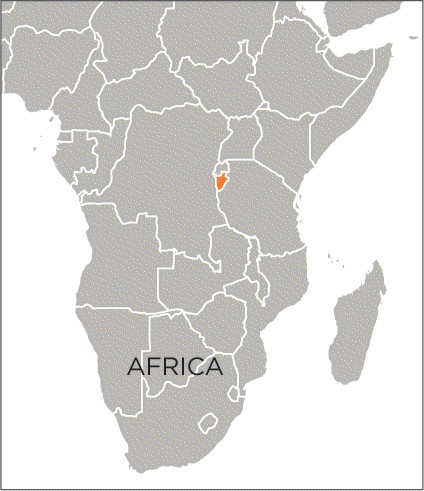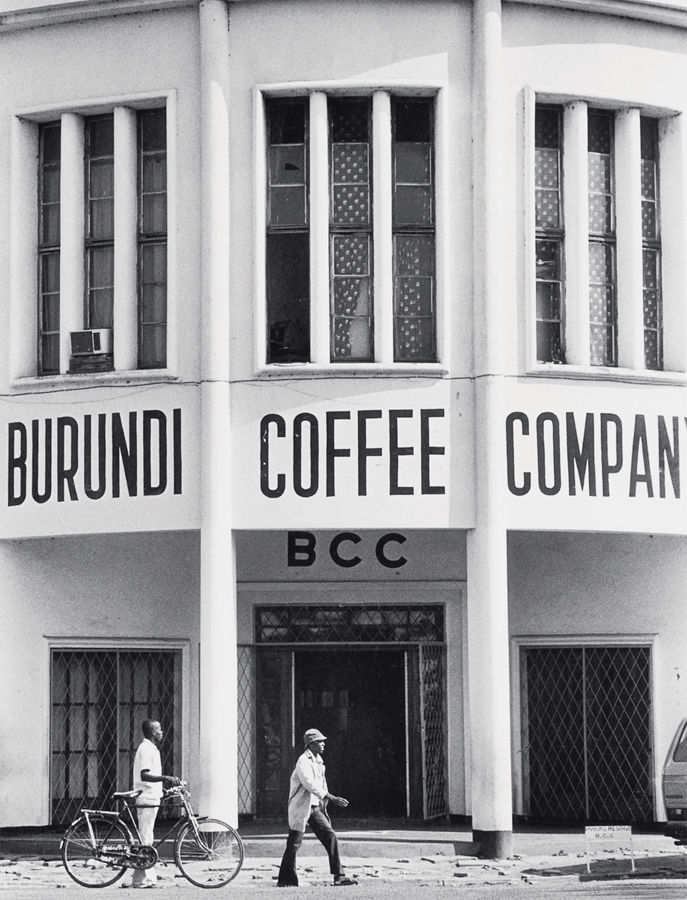Coffee came to Burundi in the 1920s under Belgian colonial rule, and from 1933 every peasant farmer had to cultivate at least fifty coffee trees. When Burundi gained its independence in 1962, coffee production went private. This changed in 1972, along with the political climate, but since 1991 coffee has slowly been returning to the private sector.

Coffee growing had been increasing steadily, but the civil war in 1993 caused a precipitous drop in production. Since then, efforts have been made to increase both production and the value of coffee in Burundi. Investment in the industry is seen as crucial, as Burundi’s economy has been shattered by conflict. In 2011 Burundi had one of the lowest per capita incomes in the world with ninety per cent of the population relying on subsistence agriculture. Coffee and tea exports combined make up approximately ninety per cent of total foreign exchange earnings. Coffee production is recovering, but has not yet reached the levels of the early 1980s. However, there is hope for coffee in Burundi. With 650,000 families dependent on the crop, movements towards higher prices through improvement of quality can only be a good thing. However, the constant fear of political instability returning looms large.
Burundi’s geography is well suited to coffee. Much of it is mountainous, providing the necessary altitudes and climates. There are no coffee estates in Burundi, instead coffee is produced by large numbers of smallholder farmers. Recently these producers have become more organized, usually centring around one of the 160 washing stations in the country. Around two-thirds of these washing stations are under state ownership, the others are privately owned. Anything from several hundred up to two thousand producers feed their coffee into each washing station.
Within each region, these stations are grouped together into SOGESTALs (Sociétés de Gestion des Stations de Lavage), which are effectively management organizations for groups of washing stations. Development of quality in recent years has been directed through these organizations, mainly through the provision of better infrastructure in their regions.
The best coffees from Burundi are fully washed and usually made up of the Bourbon variety, though other varieties are grown. In many ways there are similarities between Burundi and its neighbour Rwanda: the countries have similar altitudes and coffee varieties, and both face the challenges of being landlocked, which can hinder the rapid export necessary for the raw coffee to arrive in the consuming countries in good condition. As in Rwanda, coffees in Burundi are also susceptible to the potato defect.
TRACEABILITY
Until recently, the coffees from all the washing stations within each SOGESTAL were blended together. This meant that coffees exported from Burundi were only traceable back to their SOGESTAL, which is effectively their region of origin.
In 2008 Burundi began to embrace the speciality coffee sector, allowing more direct and traceable purchasing. In 2011 there was a coffee quality competition in Burundi called the Prestige Cup, a precursor to the more established Cup of Excellence. The lots from individual washing stations were kept separate and ranked on quality, then they were sold at auction with their traceability intact. This means that we are likely to see more unique and interesting coffees coming out of Burundi in the future and there is great potential for quality.

 Coffee pickers bring their harvest to be washed in Kayanza, Burundi.
Coffee pickers bring their harvest to be washed in Kayanza, Burundi.
TASTE PROFILE
Great coffees from Burundi can have complex berry fruit flavours, and a great juicy quality.
GROWING REGIONS
Population: 11,179,000
Number of 60kg (132lb) bags in 2016: 351,000
Burundi is such a small country that it doesn’t really have distinct growing areas. Coffee grows right across the country, wherever there is suitable land and altitude. The country is divided into provinces, and coffee farms are clustered around the washing stations (wet mills) there.
BUBANZA
This region is in the northwest of Burundi.
| Altitude | average of 1,350m (4,400ft) |
| Harvest: | April–July |
| Varieties: | Bourbon, Jackson, Mibrizi and some SL varieties |
BUJUMBURA RURAL
Located in western Burundi.
| Altitude: | average of 1,400m (4,600ft) |
| Harvest: | April–July |
| Varieties: | Bourbon, Jackson, Mibrizi and some SL varieties |
BURURI
This southwestern province contains three of Burundi’s national parks.
| Altitude: | average of 1,550m (5,050ft) |
| Harvest: | April–July |
| Varieties: | Bourbon, Jackson, Mibrizi and some SL varieties |
CIBITOKE
This province is in the very northwest of Burundi, close to the border with the Democratic Republic of Congo.
| Altitude: | average of 1,450m (4,750ft) |
| Harvest: | April–July |
| Varieties: | Bourbon, Jackson, Mibrizi and some SL varieties |
GITEGA
This central region contains one of the two state-owned dry mills, used for the final stages of preparation and quality control before export.
| Altitude: | average of 1,450m (4,750ft) |
| Harvest: | April–July |
| Varieties: | Bourbon, Jackson, Mibrizi and some SL varieties |
KARUZI
This region is slightly west of central Burundi.
| Altitude: | average of 1,600m (5,200ft) |
| Harvest: | April–July |
| Varieties: | Bourbon, Jackson, Mibrizi and some SL varieties |
KAYANZA
This northern region, near the Rwandan border, has the second highest number of stations.
| Altitude: | average of 1,700m (5,600ft) |
| Harvest: | April–July |
| Varieties: | Bourbon, Jackson, Mibrizi and some SL varieties |
KIRUNDO
This region is in the northernmost part of the country.
| Altitude: | average of 1,500m (4,900ft) |
| Harvest: | April–July |
| Varieties: | Bourbon, Jackson, Mibrizi and some SL varieties |
MAKAMBA
One of the most southerly provinces in Burundi.
| Altitude: | average of 1,550m (5,050ft) |
| Harvest: | April–July |
| Varieties: | Bourbon, Jackson, Mibrizi and some SL varieties |
MURAMVYA
A small region in the central part of the country.
| Altitude: | average of 1,800m (5,900ft) |
| Harvest: | April–July |
| Varieties: | Bourbon, Jackson, Mibrizi and some SL varieties |
MUYINGA
This region borders Tanzania in the northeastern part of the country.
| Altitude: | average of 1,600m (5,200ft) |
| Harvest: | April–July |
| Varieties: | Bourbon, Jackson, Mibrizi and some SL varieties |
MWARO
Another small region in the middle of the country.
| Altitude: | Average of 1,700m (5,600ft) |
| Harvest: | April–July |
| Varieties: | Bourbon, Jackson, Mibrizi and some SL varieties |
NGOZI
The most concentrated region for coffee production, in the north of the country, with 25 per cent of the washing stations.
| Altitude: | average of 1,650m (5,400ft) |
| Harvest: | April–July |
| Varieties: | Bourbon, Jackson, Mibrizi and some SL varieties |
RUTANA
This region is in southern Burundi, west of Mount Kiziki. It has one washing station. Number of washing stations: 1
| Altitude: | average of 1,550m (5,050ft) |
| Harvest: | April–July |
| Varieties: | Bourbon, Jackson, Mibrizi and some SL varieties |